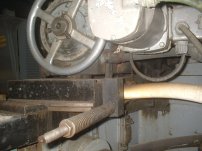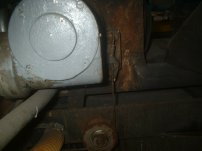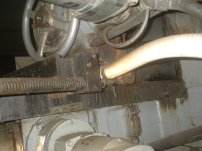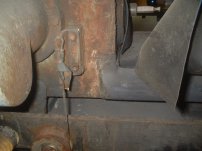cuttergrinder
Hot Rolled
- Joined
- Mar 16, 2007
- Location
- Salem,Ohio
Ive been working on the grinder a little as i have time. I got the rocker bearings mounted to the lathe bed and the grinder table. I also made the brackets to mount the gearbox and motor to the drive the spindle. I still need to make the brackets to attach the follower wheel to the grinder table. It looks like I am going to need atleast a 10" grinding wheel in order to be large enough to not hit the lathe bed while grinding. I will have to slow down my grinder for the larger wheels and probably mount a larger motor. I also need to make something to hold a spring on the back side of the lathe bed to keep pressure against the follower wheel although the drive for the lathe is going to hang towards the grinder head so it will probably have enough pressure on the follower just from that. Time will tell. I made a sleeve to screw on the lathe spindle to hold the masters and the dividing head. It still needs finished.






